Year of the Sheep, Century of the Dragon?
Seen from the Chinese capital as the Year of the Sheep starts, the malaise affecting the West seems like a mirage in a galaxy far, far away. On the other hand, the China that surrounds you looks all too solid and nothing like the embattled nation you hear about in the Western media.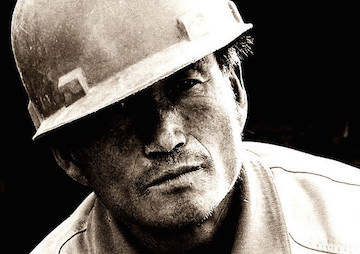 A construction worker in Beijing. (Saad Akhtar/CC BY 2.0)
A construction worker in Beijing. (Saad Akhtar/CC BY 2.0)
By Pepe Escobar, TomDispatchThis piece first appeared at TomDispatch. Read Tom Engelhardt’s introduction here.
BEIJING — Seen from the Chinese capital as the Year of the Sheep starts, the malaise affecting the West seems like a mirage in a galaxy far, far away. On the other hand, the China that surrounds you looks all too solid and nothing like the embattled nation you hear about in the Western media, with its falling industrial figures, its real estate bubble, and its looming environmental disasters. Prophecies of doom notwithstanding, as the dogs of austerity and war bark madly in the distance, the Chinese caravan passes by in what President Xi Jinping calls “new normal” mode.
“Slower” economic activity still means a staggeringly impressive annual growth rate of 7% in what is now the globe’s leading economy. Internally, an immensely complex economic restructuring is underway as consumption overtakes investment as the main driver of economic development. At 46.7% of the gross domestic product (GDP), the service economy has pulled ahead of manufacturing, which stands at 44%.
Geopolitically, Russia, India, and China have just sent a powerful message westward: they are busy fine-tuning a complex trilateral strategy for setting up a network of economic corridors the Chinese call “new silk roads” across Eurasia. Beijing is also organizing a maritime version of the same, modeled on the feats of Admiral Zheng He who, in the Ming dynasty, sailed the “western seas” seven times, commanding fleets of more than 200 vessels.
Meanwhile, Moscow and Beijing are at work planning a new high-speed rail remix of the fabled Trans-Siberian Railroad. And Beijing is committed to translating its growing strategic partnership with Russia into crucial financial and economic help, if a sanctions-besieged Moscow, facing a disastrous oil price war, asks for it.
To China’s south, Afghanistan, despite the 13-year American war still being fought there, is fast moving into its economic orbit, while a planned China-Myanmar oil pipeline is seen as a game-changing reconfiguration of the flow of Eurasian energy across what I’ve long called Pipelineistan.
And this is just part of the frenetic action shaping what the Beijing leadership defines as the New Silk Road Economic Belt and the Maritime Silk Road of the twenty-first century. We’re talking about a vision of creating a potentially mind-boggling infrastructure, much of it from scratch, that will connect China to Central Asia, the Middle East, and Western Europe. Such a development will include projects that range from upgrading the ancient silk road via Central Asia to developing a Bangladesh-China-India-Myanmar economic corridor; a China-Pakistan corridor through Kashmir; and a new maritime silk road that will extend from southern China all the way, in reverse Marco Polo fashion, to Venice.
Don’t think of this as the twenty-first-century Chinese equivalent of America’s post-World War II Marshall Plan for Europe, but as something far more ambitious and potentially with a far vaster reach.
China as a Mega-City
If you are following this frenzy of economic planning from Beijing, you end up with a perspective not available in Europe or the U.S. Here, red-and-gold billboards promote President Xi Jinping’s much ballyhooed new tagline for the country and the century, “the Chinese Dream” (which brings to mind “the American Dream” of another era). No subway station is without them. They are a reminder of why 40,000 miles of brand new high-speed rail is considered so essential to the country’s future. After all, no less than 300 million Chinese have, in the last three decades, made a paradigm-breaking migration from the countryside to exploding urban areas in search of that dream.
Another 350 million are expected to be on the way, according to a McKinsey Global Institute study. From 1980 to 2010, China’s urban population grew by 400 million, leaving the country with at least 700 million urban dwellers. This figure is expected to hit one billion by 2030, which means tremendous stress on cities, infrastructure, resources, and the economy as a whole, as well as near-apocalyptic air pollution levels in some major cities.
Already 160 Chinese cities boast populations of more than one million. (Europe has only 35.) No less than 250 Chinese cities have tripled their GDP per capita since 1990, while disposable income per capita is up by 300%.
These days, China should be thought of not in terms of individual cities but urban clusters — groupings of cities with more than 60 million people. The Beijing-Tianjin area, for example, is actually a cluster of 28 cities. Shenzhen, the ultimate migrant megacity in the southern province of Guangdong, is now a key hub in a cluster as well. China, in fact, has more than 20 such clusters, each the size of a European country. Pretty soon, the main clusters will account for 80% of China’s GDP and 60% of its population. So the country’s high-speed rail frenzy and its head-spinning infrastructure projects — part of a $1.1 trillion investment in 300 public works — are all about managing those clusters.
Not surprisingly, this process is intimately linked to what in the West is considered a notorious “housing bubble,” which in 1998 couldn’t have even existed. Until then all housing was still owned by the state. Once liberalized, that housing market sent a surging Chinese middle class into paroxysms of investment. Yet with rare exceptions, middle-class Chinese can still afford their mortgages because both rural and urban incomes have also surged.
The Chinese Communist Party (CCP) is, in fact, paying careful attention to this process, allowing farmers to lease or mortgage their land, among other things, and so finance their urban migration and new housing. Since we’re talking about hundreds of millions of people, however, there are bound to be distortions in the housing market, even the creation of whole disastrous ghost towns with associated eerie, empty malls.
The Chinese infrastructure frenzy is being financed by a pool of investments from central and local government sources, state-owned enterprises, and the private sector. The construction business, one of the country’s biggest employers, involves more than 100 million people, directly or indirectly. Real estate accounts for as much as 22% of total national investment in fixed assets and all of this is tied to the sale of consumer appliances, furnishings, and an annual turnover of 25% of China’s steel production, 70% of its cement, 70% of its plate glass, and 25% of its plastics.
So no wonder, on my recent stay in Beijing, businessmen kept assuring me that the ever-impending “popping” of the “housing bubble” is, in fact, a myth in a country where, for the average citizen, the ultimate investment is property. In addition, the vast urbanization drive ensures, as Premier Li Keqiang stressed at the recent World Economic Forum in Davos, a “long-term demand for housing.”
Markets, Markets, Markets
China is also modifying its manufacturing base, which increased by a multiple of 18 in the last three decades. The country still produces 80% of the world’s air conditioners, 90% of its personal computers, 75% of its solar panels, 70% of its cell phones, and 63% of its shoes. Manufacturing accounts for 44% of Chinese GDP, directly employing more than 130 million people. In addition, the country already accounts for 12.8% of global research and development, well ahead of England and most of Western Europe.
Yet the emphasis is now switching to a fast-growing domestic market, which will mean yet more major infrastructural investment, the need for an influx of further engineering talent, and a fast-developing supplier base. Globally, as China starts to face new challenges — rising labor costs, an increasingly complicated global supply chain, and market volatility — it is also making an aggressive push to move low-tech assembly to high-tech manufacturing. Already, the majority of Chinese exports are smartphones, engine systems, and cars (with planes on their way). In the process, a geographic shift in manufacturing is underway from the southern seaboard to Central and Western China. The city of Chengdu in the southwestern province of Sichuan, for instance, is now becoming a high-tech urban cluster as it expands around firms like Intel and HP.
So China is boldly attempting to upgrade in manufacturing terms, both internally and globally at the same time. In the past, Chinese companies have excelled in delivering the basics of life at cheap prices and acceptable quality levels. Now, many companies are fast upgrading their technology and moving up into second- and first-tier cities, while foreign firms, trying to lessen costs, are moving down to second- and third-tier cities. Meanwhile, globally, Chinese CEOs want their companies to become true multinationals in the next decade. The country already has 73 companies in the Fortune Global 500, leaving it in the number two spot behind the U.S.
In terms of Chinese advantages, keep in mind that the future of the global economy clearly lies in Asia with its record rise in middle-class incomes. In 2009, the Asia-Pacific region had just 18% of the world’s middle class; by 2030, according to the Development Center of the Organization for Economic Cooperation and Development, that figure will rise to an astounding 66%. North America and Europe had 54% of the global middle class in 2009; in 2030, it will only be 21%.
Follow the money, and the value you get for that money, too. For instance, no less than 200,000 Chinese workers were involved in the production of the first iPhone, overseen by 8,700 Chinese industrial engineers. They were recruited in only two weeks. In the U.S., that process might have taken more than nine months. The Chinese manufacturing ecosystem is indeed fast, flexible, and smart — and it’s backed by an ever more impressive education system. Since 1998, the percentage of GDP dedicated to education has almost tripled; the number of colleges has doubled; and in only a decade, China has built the largest higher education system in the world.
Strengths and Weaknesses
China holds more than $15 trillion in bank deposits, which are growing by a whopping $2 trillion a year. Foreign exchange reserves are nearing $4 trillion. A definitive study of how this torrent of funds circulates within China among projects, companies, financial institutions, and the state still does not exist. No one really knows, for instance, how many loans the Agricultural Bank of China actually makes. High finance, state capitalism, and one-party rule all mix and meld in the realm of Chinese financial services where realpolitik meets real big money.
The big four state-owned banks — the Bank of China, the Industrial and Commercial Bank of China, the China Construction Bank, and the Agricultural Bank of China — have all evolved from government organizations into semi-corporate state-owned entities. They benefit handsomely both from legacy assets and government connections, or guanxi, and operate with a mix of commercial and government objectives in mind. They are the drivers to watch when it comes to the formidable process of reshaping the Chinese economic model.
As for China’s debt-to-GDP ratio, it’s not yet a big deal. In a list of 17 countries, it lies well below those of Japan and the U.S., according to Standard Chartered Bank, and unlike in the West, consumer credit is only a small fraction of total debt. True, the West exhibits a particular fascination with China’s shadow banking industry: wealth management products, underground finance, off-the-balance-sheet lending. But such operations only add up to around 28% of GDP, whereas, according to the International Monetary Fund, it’s a much higher percentage in the U.S.
China’s problems may turn out to come from non-economic areas where the Beijing leadership has proven far more prone to false moves. It is, for instance, on the offensive on three fronts, each of which may prove to have its own form of blowback: tightening ideological control over the country under the rubric of sidelining “Western values”; tightening control over online information and social media networks, including reinforcing “the Great Firewall of China” to police the Internet; and tightening further its control over restive ethnic minorities, especially over the Uighurs in the key western province of Xinjiang.
On two of these fronts — the “Western values” controversy and Internet control — the leadership in Beijing might reap far more benefits, especially among the vast numbers of younger, well educated, globally connected citizens, by promoting debate, but that’s not how the hyper-centralized Chinese Communist Party machinery works.
When it comes to those minorities in Xinjiang, the essential problem may not be with the new guiding principles of President Xi’s ethnic policy. According to Beijing-based analyst Gabriele Battaglia, Xi wants to manage ethnic conflict there by applying the “three Js”: jiaowang, jiaoliu, jiaorong (“inter-ethnic contact,” “exchange,” and “mixage”). Yet what adds up to a push from Beijing for Han/Uighur assimilation may mean little in practice when day-to-day policy in Xinjiang is conducted by unprepared Han cadres who tend to view most Uighurs as “terrorists.”
If Beijing botches the handling of its Far West, Xinjiang won’t, as expected, become the peaceful, stable, new hub of a crucial part of the silk-road strategy. Yet it is already considered an essential communication link in Xi’s vision of Eurasian integration, as well as a crucial conduit for the massive flow of energy supplies from Central Asia and Russia. The Central Asia-China pipeline, for instance, which brings natural gas from the Turkmen-Uzbek border through Uzbekistan and southern Kazakhstan, is already adding a fourth line to Xinjiang. And one of the two newly agreed upon Russia-China pipelines will also arrive in Xinjiang.
The Book of Xi
The extent and complexity of China’s myriad transformations barely filter into the American media. Stories in the U.S. tend to emphasize the country’s “shrinking” economy and nervousness about its future global role, the way it has “duped” the U.S. about its designs, and its nature as a military “threat” to Washington and the world.
The U.S. media has a China fever, which results in typically feverish reports that don’t take the pulse of the country or its leader. In the process, so much is missed. One prescription might be for them to read The Governance of China, a compilation of President Xi’s major speeches, talks, interviews, and correspondence. It’s already a three-million-copy bestseller in its Mandarin edition and offers a remarkably digestible vision of what Xi’s highly proclaimed “China Dream” will mean in the new Chinese century.
Xi Dada (“Xi Big Bang” as he’s nicknamed here) is no post-Mao deity. He’s more like a pop phenomenon and that’s hardly surprising. In this “to get rich is glorious” remix, you couldn’t launch the superhuman task of reshaping the Chinese model by being a cold-as-a-cucumber bureaucrat. Xi has instead struck a collective nerve by stressing that the country’s governance must be based on competence, not insider trading and Party corruption, and he’s cleverly packaged the transformation he has in mind as an American-style “dream.”
Behind the pop star clearly lies a man of substance that the Western media should come to grips with. You don’t, after all, manage such an economic success story by accident. It may be particularly important to take his measure since he’s taken the measure of Washington and the West and decided that China’s fate and fortune lie elsewhere.
As a result, last November he made official an earthshaking geopolitical shift. From now on, Beijing would stop treating the U.S. or the European Union as its main strategic priority and refocus instead on China’s Asian neighbors and fellow BRICS countries (Brazil, Russia, India, and South Africa, with a special focus on Russia), also known here as the “major developing powers” (kuoda fazhanzhong de guojia). And just for the record, China does not consider itself a “developing country” anymore.
No wonder there’s been such a blitz of Chinese mega-deals and mega-dealings across Pipelineistan recently. Under Xi, Beijing is fast closing the gap on Washington in terms of intellectual and economic firepower and yet its global investment offensive has barely begun, new silk roads included.
Singapore’s former foreign minister George Yeo sees the newly emerging world order as a solar system with two suns, the United States and China. The Obama administration’s new National Security Strategy affirms that “the United States has been and will remain a Pacific power” and states that “while there will be competition, we reject the inevitability of confrontation” with Beijing. The “major developing powers,” intrigued as they are by China’s extraordinary infrastructural push, both internally and across those New Silk Roads, wonder whether a solar system with two suns might not be a non-starter. The question then is: Which “sun” will shine on Planet Earth? Might this, in fact, be the century of the dragon?
Pepe Escobar is the roving correspondent for Asia Times, an analyst for RT and Sputnik, and a TomDispatch regular. His latest book is Empire of Chaos. Follow him on Facebook by clicking here.
Follow TomDispatch on Twitter and join us on Facebook. Check out the newest Dispatch Book, Rebecca Solnit’s Men Explain Things to Me, and Tom Engelhardt’s latest book, Shadow Government: Surveillance, Secret Wars, and a Global Security State in a Single-Superpower World.
Copyright 2015 Pepe Escobar
Your support matters…Independent journalism is under threat and overshadowed by heavily funded mainstream media.
You can help level the playing field. Become a member.
Your tax-deductible contribution keeps us digging beneath the headlines to give you thought-provoking, investigative reporting and analysis that unearths what's really happening- without compromise.
Give today to support our courageous, independent journalists.
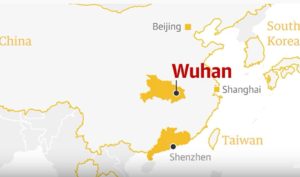
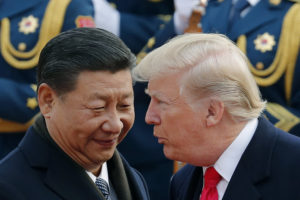


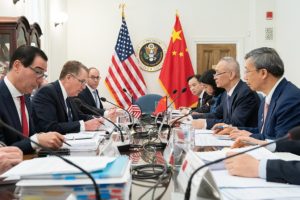
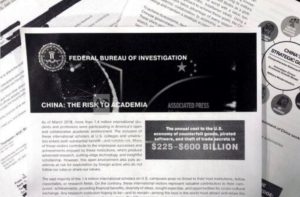
You need to be a supporter to comment.
There are currently no responses to this article.
Be the first to respond.